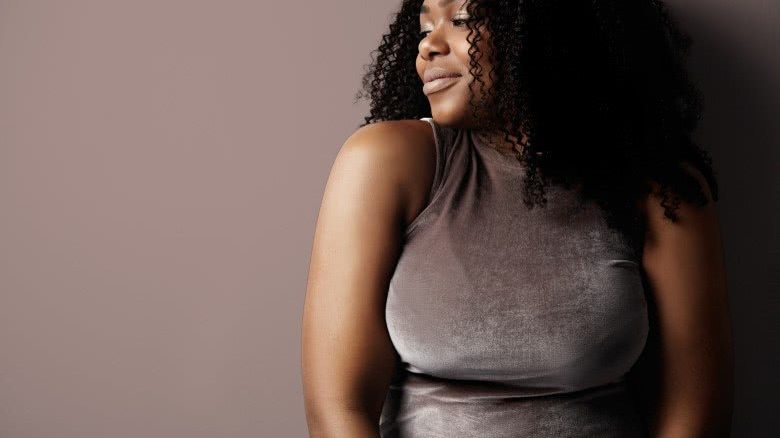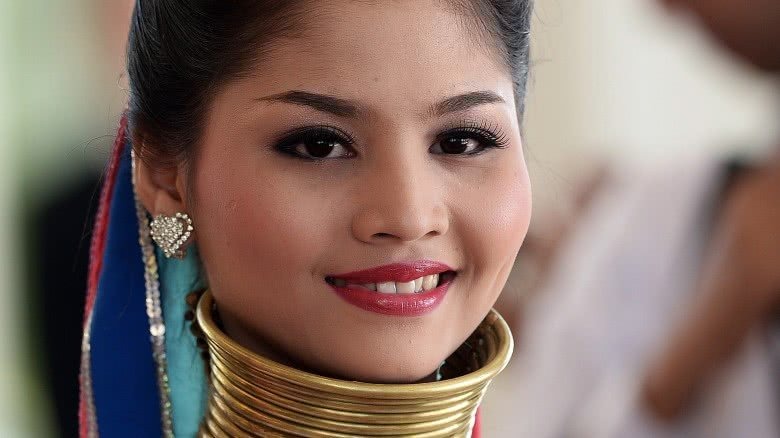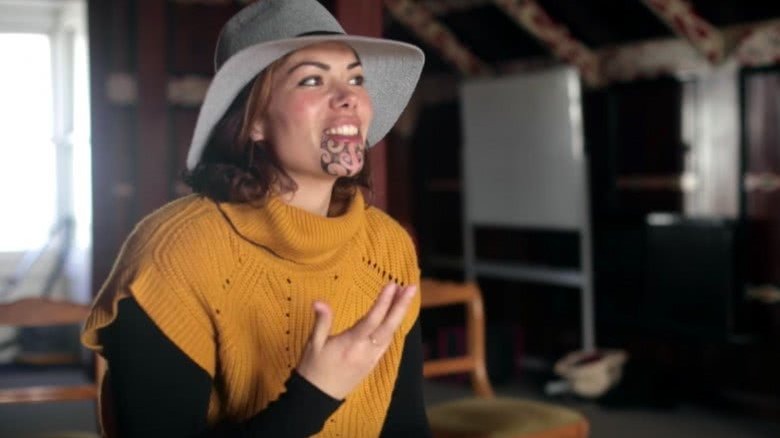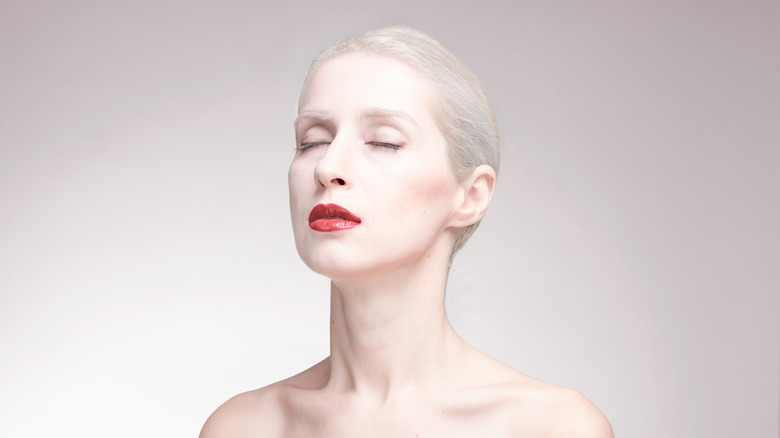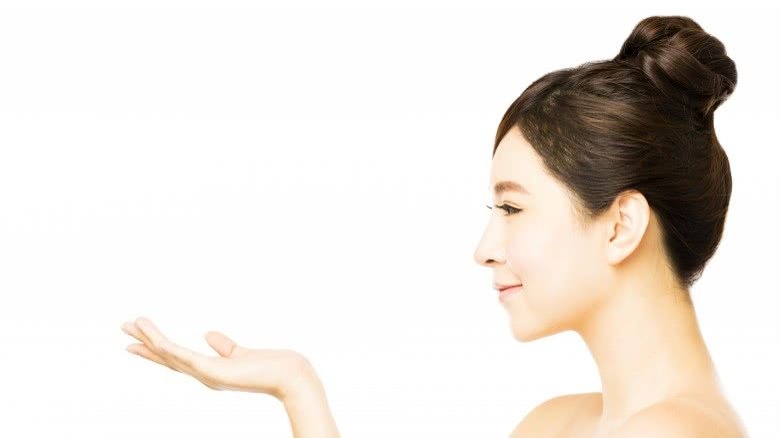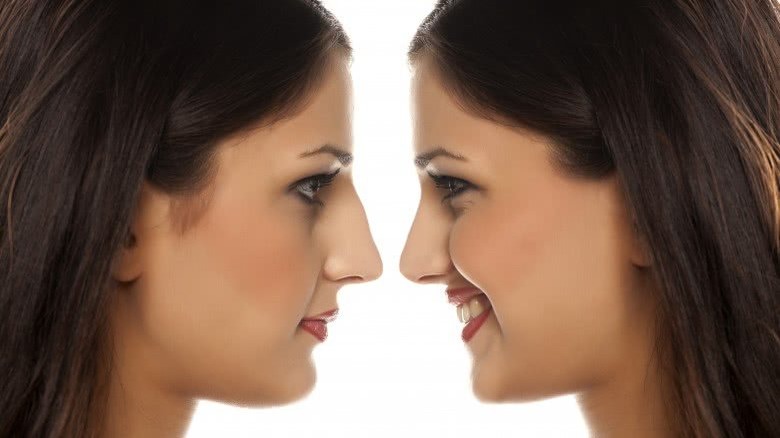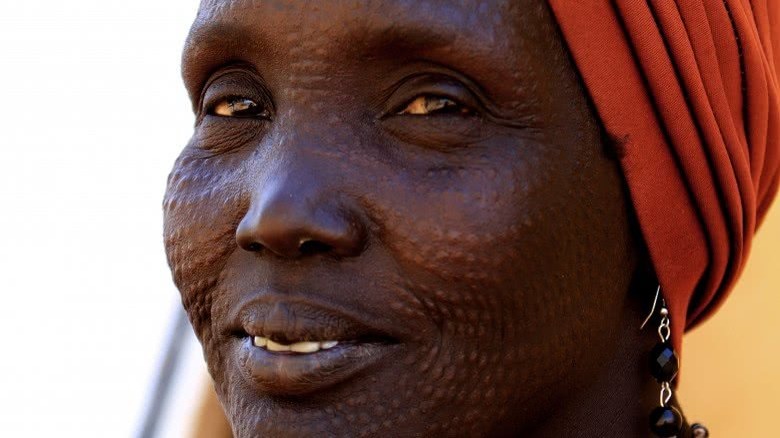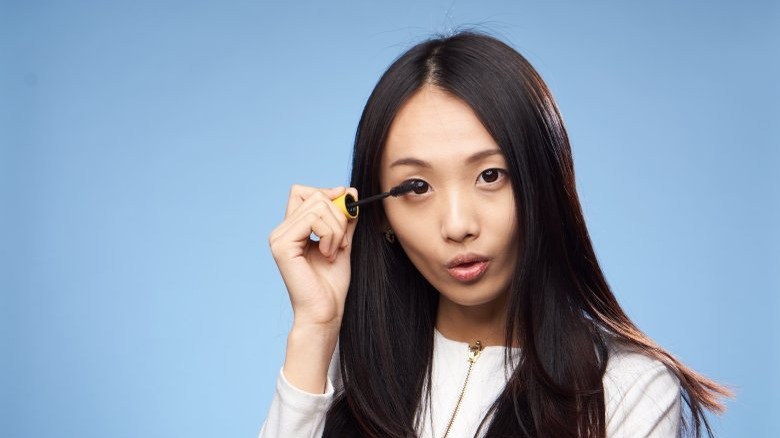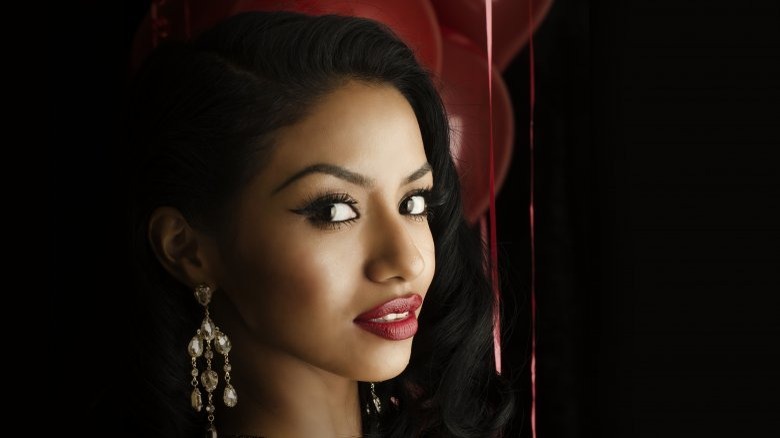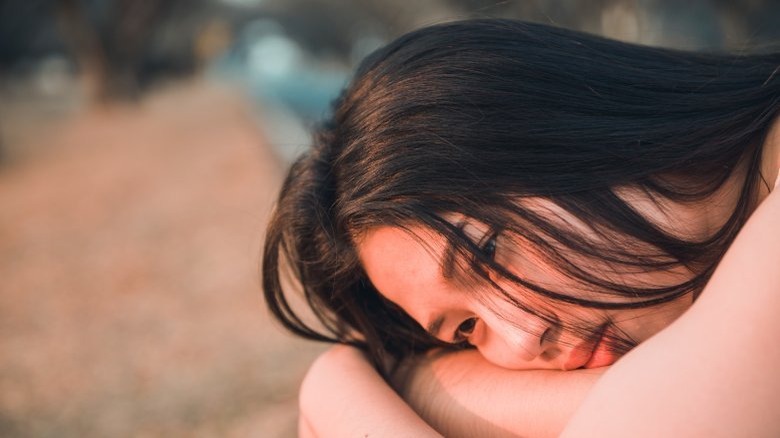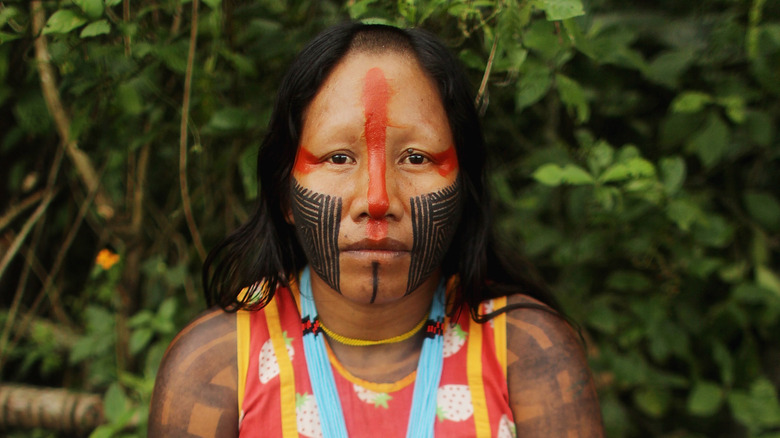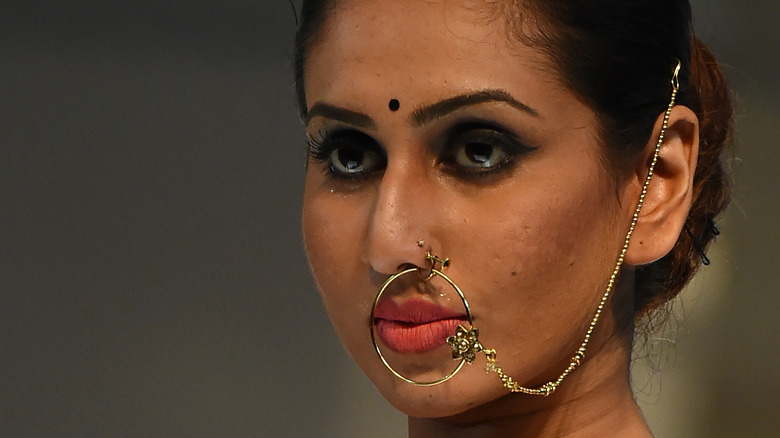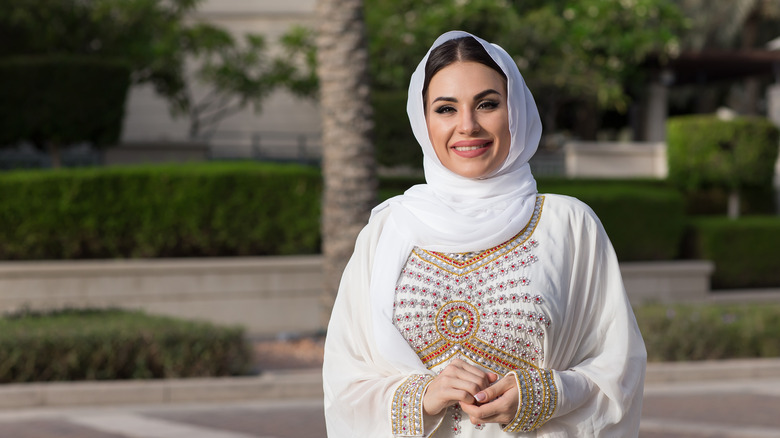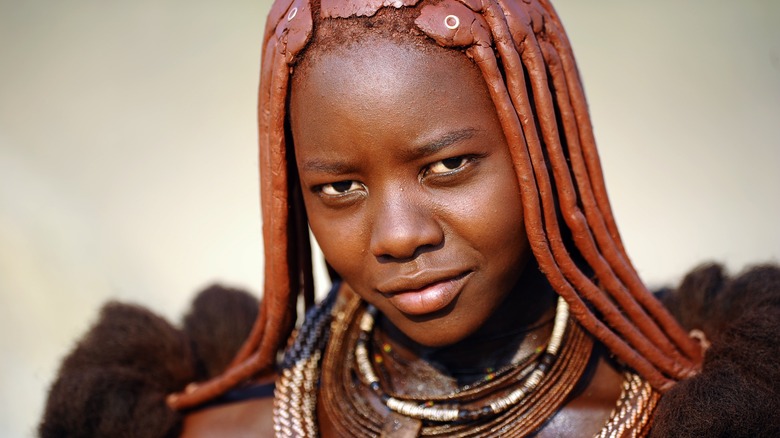What People Find Unattractive In Different Parts Of The World
Beauty is an aesthetic, a concept, a product, a tradition, and even a sport. It is always subjective, but one sure thing about beauty, is that it changes drastically depending on geographic coordinates.
Each culture has its own unique standard of beauty, making an attractive person in Hollywood likely to appear unattractive in Africa, for instance. Some countries keep beauty practices minimal, while others have a whole lot to say about what makes the "perfect" woman.
All dolled up
In France, you might feel more comfortable going out without makeup. It is a place where natural beauty is revered, rather than cosmetically-enhanced beauty. In the United States we see celebrities layering on the makeup, but that's the opposite of what a French woman would do. In an interview with Vogue, Paris-based professional makeup artist Violette explains how the French use makeup compared to how other cultures might.
"What we want is to be ourselves," Violette explains, "Not a better version of ourselves. We feel like it's better to be used to something than to try to change it. So we think: what style can I have with this face, and with this hair? That mentality is 100 percent French." If a French woman uses makeup, it is typically only kept to a minimum to highlight her natural features. If you look like you're trying too hard, or putting a lot of time and effort into your appearance, you're not a true Parisian beauty.
A small figure
Though curves are becoming more accepted as a beauty ideal in the west, there's certainly not an overt acceptance of large body types. On the flip side, some countries live by the phrase "the bigger the better." North West University nutrition professor Salome Kruger told How Ghana, "Some African men find obese women more attractive and would like their own wife to be obese, to show that he cares well for her and that she is not sick and [is] able to produce children."
A generous booty and wide hips are also sought after in Jamaica, according to NPR. "If you have no meat on your bones, the society can't see your wealth, your progress, your being," said Sonjah Stanley-Niaah, a lecturer in cultural studies at the University of the West Indies. Some Jamaican women even go so far as to take "chicken pills" to plump up their backside, which can be dangerous due to their arsenic content.
According to How Ghana, studies by the Human Sciences Research Council demonstrated that obesity among black women in South Africa may be due to their inclination to link weight gain with wellbeing and attractiveness. This concept is not a new one: Just change "weight gain" for "weight loss" and you have America. This correlation between a woman's weight and her status in society appears to apply in a variety of forms — so every woman can rest assured that she can feel bad about herself somewhere in the world.
No curves
Slenderness has been an idealized body type for women in western countries for decades, but we've seen a slow shift toward curves in recent years. Before Kim Kardashian broke the internet with her bountiful backside, women in other parts of the world were already working to get some junk in their trunk. In Brazil, a large rear end is still considered sexy to most Brazilian men, according to an article in The New York Times. This endures, even as beauty standards there are changing due to outside influence, and eating disorders are on the rise as women work to get thinner and thinner.
In Venezuela, there is pressure to have a specific kind of figure: big bust, tiny waist, plump booty. Women often undergo multiple surgeries to fit their country's standard of beauty. In 2011, the country's president, Hugo Chàvez, publicly spoke out against these practices, saying that doctors "convince some women that if they don't have some big bosoms, they should feel bad."
Still, these standards permeate retail. Vendors even display mannequins that reflect this particular shape because the more voluptuous form actually ups their sales. One Venezuelan woman in a New York Times video says, "The Venezuelan woman will never be satisfied, because she's always going to be getting her breasts done again."
Unadorned necks
Many of us have seen women with rings stacked high on their elongated necks in issues of National Geographic. This kind of body modification takes place in regions of Thailand and Burma (Myanmar), and it is the trademark of a Padaung tribeswoman. Even though the necks appear to get longer, what actually happens when a woman receives her rings is that the heavy gold coil pushes down on her shoulders and collar bone, making the neck seem longer than it is.
Still, it is not for the end result of seeing the long, bare neck that these women practice this tradition. In fact, having an exposed neck is uncomfortable for a woman of this tribe, despite the initial amazement at finally getting to see what her neck looks like. The long, coil-bearing neck is a mark of belonging, as well as beauty.
A tattoo-less face
In the United States, face tattoos can be associated with gang affiliation, or simply considered the mark of an undesirable, social outcast. However, it is the complete opposite for the Maori people of New Zealand, whose cultural history has been literally and figuratively marked by striking facial ink.
Getting one's face tattooed in this culture is known as Tā Moko. Women who participate in this tradition get chin tattoos, signalling a huge milestone in their lives. According to Broadly, "[The] traditional female chin tattoo is considered a physical manifestation of their true identity. It is believed every Māori woman wears a moko on the inside, close to their heart; when they are ready, the tattoo artist simply brings it out to the surface." Each chin tattoo is personal and particular to the wearer. It is usually stylized after their ancestral markings, as well as after their own identity. It is a practice that makes Māori women feel whole, beautiful and fully realized.
Super pale skin
In many countries around the world, such as China, pale skin is idealized, and women go to great lengths to avoid the sun (more on that in the next slide). However, that's not the case everywhere, as in some places, having a tan that makes you look fresh off the beach is considered desirable. Jefferson M. Fish, a Professor Emeritus of psychology at St. John's University wrote on Psychology Today that, "In the United States, many white folks like to sport a tan. Some even go to tanning salons, despite warnings about skin cancer."
Why is this is considered attractive to people? Fish continued, "A temporary tan — an acquired tan — has one set of social meanings — health, leisure, and sexual attractiveness." So it shows that you have both the time to go to the beach and the money to get there, which is a reflection of your status in society. Fish also noted that this is a privilege afforded to white people only, so race is clearly a factor here.
A tan
Here's proof that beauty truly is in the eye of the beholder (or, in this case, dependent on where you life). We know that in America, having a tan is a sign of beauty, but also of social status because it signals that you have the luxury to be able to afford a tropical vacation or leisure time at the beach. While many Americans would kill to have the perfect bronze tan, that is not so for many Asian countries.
In places like China and Korea, for example, having a tan is a sign of poor social status. In these cultures, the darker a person's skin, the lower the social class: It signifies that the person does a lot of outside, manual labor. By contrast, the lighter an Asian person's skin is, the higher their social class and the greater their beauty. Women will go outside with parasols to keep their skin light, or will even go so far as to consider skin bleaching.
A natural nose
Many people with flush bank accounts in the US get work done to their faces. Nose jobs, botox — anything to get that much closer to perfection or youth. But plastic surgery means something a little bit different in Iran. For many Iranian women, getting a nose job isn't just something you do if you have a lot of money or a bad nose, it's something virtually any woman of any class wants.
According to Vice, Iran has the highest rate of nose surgery per capita in the world. So why is everyone running to the surgeon? Not only is it a status symbol, it's a way of trying to find a good mate. "The bandage signals that you come from a family who cares and provides for you," Vice reported, "Even if you don't need a nose job, having a family that can afford to give you one is preferable to having the genetics for a petite nose." Iranian women will often continue to wear a bandage over their nose long after they've gotten their surgery to indicate to others — especially men — that they have had the coveted procedure done. If you've got the nose you were born with, you're getting picked last for a "happily ever after."
Smooth skin
In many countries, if you have a scar (or several scars) people gape and ask what happened to you. But in Ethiopia, scars are a way of articulating beauty for women, as well as physical prowess for men. "In Ethiopia's Karo tribe," according to National Geographic, "Men scar their chests to represent killing enemies from other tribes. Women with scarred torsos and chests are considered particularly sensual and attractive."
So when you look in the mirror and you see stretch marks, think about how in another part of the world you would be looked upon as beautiful for them. While we go to great pains to minimize and hide our scars, other cultures willingly undergo scarification and celebrate it.
The monolid
In South Korea, the biggest plastic surgery trend is the double eyelid surgery. This is a procedure many caucasian or African Americans may not have heard about before, but for many South Korean women, it's normalized. It's not unusual for South Korean parents to offer their children double eyelid surgery as a gift. So what is it, and why is it so desirable?
Many Asians have what is commonly referred to as a monolid — literally meaning "one eyelid." It's that crease on the upper lid that they're after. Many South Korean women think that the double eyelid is more attractive. While a double eyelid is common in Western women, many cosmetic surgeons argue that South Korean women don't get the surgery to Westernize themselves or reject their heritage, but rather to emphasize their facial features and emulate their favorite K-Pop stars.
As The Atlantic reported, it's widely known that the majority of South Korea's pop stars and celebrities opt for this kind of surgery and, as in most cultures, people like to emulate what they see famous, successful people doing. So while the double eyelid surgery is normalized within groups of family and friends, it is made even more desirable by the country's entertainment culture.
Thin eyebrows
Full eyebrows have been trending in the U.S. on and off since the 1940s, with thin eyebrows coming back in style here and there over the past century. But luscious brows are a beauty staple within the Mexican culture.
As part of their video series, 100 Years of Beauty, Cut.com shared a video of beauty trends by the decade in Mexico. For the better part of a century, the epitome of Mexican beauty has involved dark curls, red lipstick, and bold eyebrows.
Dramatic, shapely brows are a defining facial feature that is specific to Mexican cultural history. While women today don't go as far as donning brows like those of famous artist Frida Kahlo, Mexican women still prefer dark and striking brows as opposed to thin ones. So if you're trying to get those eyebrows #OnFleek, you should probably draw your inspiration from Mexican beauty standards
Bad character
In Thailand, a person's beauty is determined not just by their physical appearance, but by their character. What kind of virtues they have and what values they uphold affect people's perception of just how beautiful they really are. According to an article published in the journal, Ethics In Science And Environmental Politics, qualities like charm, good nature, a devotion to one's duties, and modesty are all positive characteristics that make a woman beautiful. If a woman lacks these qualities, she will be seen as ugly or undesirable, no matter how physically appealing she may be.
Because Thai beauty is evaluated in such a way, there is an emphasis on how well one gets along in their society. The positive intermingling of physical beauty and internal beauty lands a person in good social standing, which also improves their chances of entering into a beneficial marriage.
So on the one hand, it could be said that the Thai pay close attention to internal beauty, while on the other, it could be said that it's simply for the sake of social acceptance. Either way, if you aren't an agreeable person, you're less likely to be accepted in Thai culture. This view of beauty is essentially the polar opposite of the American notion of beauty where, for example, physically attractive celebrities can maintain their place at the top of society, regardless of their personal values.
Skin sans painted patterns
On the Amazon River in the Central Brazilian Plateau, there's a well-known tribe that inhabits a large swath of land, according to the BBC. The Kayapo, as they are known to the outside world, have a population of about 7,096 (as of 2003), and have some distinct cultural customs and beauty standards not found anywhere else.
For one, Kayapo women shave a v-shape into their scalp. Additionally, the BBC notes that both the men and women (and children) use a variety of painting techniques to adorn their skin. Often, they look to elements of nature such as animals, or insects such as bees, to inspire the patterns that they create on their bodies.
The Kayapo learn these painting techniques starting at an early age, according to the Wall Street International Magazine. Young girls practice them on dolls with body paints made from plants, seeds, fruits, and more. So to have bare, unpainted skin would indicate that a person has not been initiated into Kayapo society, which would likely not be considered attractive.
A blank forehead and an unpierced nose
Even though body piercing has become quite popular in the United States in recent years, most of those piercings are found in the ear, according to The Lancet. But that's not the case in other parts of the world.
As Erin Kenny and Elizabeth Gackstetter Nichols noted in Beauty Around the World: A Cultural Encyclopedia, "Whereas a few piercings are considered part of the norm of appearance in the United States and Europe, in a nation such as India, a nose piercing for women is a well-established element of beauty norms." So without one, it might look like something's missing. It doesn't stop at just a piercing, though.
Kenny and Nichols continued, "Married women frequently pierced their noses to wear flat studs or rings (called nath), occasionally connected with a gold chain to the ear, especially as part of a bridal costume. Today, many women choose to pierce their noses to enhance their beauty with gems, rings, or semiprecious stones." Women in India also wear a bindi or pottu on their forehead, which has a spiritual connotation.
Perfect teeth
It seems that everyone in Hollywood has straight teeth that gleam white whenever they smile or have a close-up. But some beauty-seekers in Japan have eschewed the so-called perfect smile, instead getting one that could be called slightly imperfect.
Specifically, the look is called "yaeba," which translates from the Japanese as "double tooth." And while in the United States the look is dismissed as "snaggleteeth," in Japan the dental condition is perceived quite differently — as a trend. The New York Times quoted beauty blogger Michelle Phan, who said, "In Japan, in fact, crooked teeth are actually endearing, and it shows that a girl is not perfect. And, in a way, men find that more approachable than someone who is too overly perfect."
Not everyone is on board with the trend, however, and some experts find the connotations of the yaeba trend disturbing. Dr. Emilie Zaslow, an assistant professor of communication studies at Pace University told The New York Times that, "The gapped tooth is sort of preorthodontic or early development, and the naturally occurring yaeba is because of delayed baby teeth, or a mouth that's too small," she noted. "It's this kind of emphasis on youth and the sexualization of young girls."
Unadorned teeth
Grills (or grillz) are one beauty trend that gained traction right in our own backyard, though American hip-hop culture — but it isn't too difficult to imagine how unusual they must seem to outsiders. While this isn't a trend that bloomed in modern America overnight, it actually has some surprisingly ancient roots.
As Kenny and Nichols wrote in Beauty Around the World, "After a decade or so of underground bling in the hip-hop community, lavish dental ornamentation as a status symbol entered the American pop culture mainstream." They also note that the trend has roots that go back to the middle of the seventh century BCE, when wealthy Etruscan women wore flat gold bands over their teeth.
So what do grillz represent today? "As expensive and elaborate systems, grills embody the definition of wealth, social status, and masculine virility in the contemporary U.S. urban landscape," they continued. And as time went on, it wasn't just men who sported a literal million dollar smile. "Later, women celebrities like Kylie Jenner and Lady Gaga also began wearing grillz," they added, showing just how popular the trend had become.
Natural gums
Teeth aren't the only things in your mouth that you can adorn. "In some cultures, in order to accentuate the mouth, it is not the lips that are colored, but the gums," noted Kenny and Nichols in Beauty Around the World. And it's not a new trend, either. They continued, "Gingival tattoos, or dying the gums, have been common in some cultures since ancient times in order to make the teeth appear whiter and give the smile more of a dazzling effect." They added that the practice is commonly done in Senegal and other West African countries. Sometimes, women will also sport a silver tooth to go with it to accentuate the color of the tattooed gums.
Not surprisingly, the procedure can be quite painful, as noted by Kenny and Nichols. A young Senegalese woman named Mariéme was not deterred, however, by that prospect. "I want black gums to obtain a more beautiful smile. It's become an obsession," she mused in a video made by VPRO Metropolis. "I do fear the procedure a little. But I'll be okay." And while she's visibly in pain during the tattooing, she's also pleased with the end result. "It's necessary to be beautiful and attractive," she affirmed.
Wearing only black
Make no mistake about it: Arab women are some of the most fashion-conscious women in the world. And beauty trends are shifting in the United Arab Emirates, where all women wear an abaya (a robe-like dress) outside of the home. Emirati abaya designer Alia bin Omair told The National, "Before we used to wear only black, but about two years ago the ladies started wearing beige, white, grey colours." So anyone still wearing basic black may look a bit behind when it comes to what's fashionable.
Omair also noted that women are wearing different kinds of fabrics, such as linen and wool, depending on the season. "I feel it is better to change a bit and use other fabrics," she added, after noting that all of the women she knows used to wear the same fabric all the time. Colored abayas are popping up in some parts of Saudi Arabia as well, according to National Geographic, though not in more conservative cities and towns.
Empty nostrils
Some of the most distinctive beauty traditions in the world are practiced by the women of the Apatani Tribe in India, and Kenny and Nichols wrote about them in Beauty Around the World. "Historically, women of the group distinguished themselves from other tribes through long, straight facial tattoos along the bridge of the nose and the distinctive looking yapinghule (sometimes called yapping hullo or y'apin hullo), nose plugs inserted into the flesh of the outer nose on both sides," they noted. The women also sported large brass rings in their earlobes.
The remote region where the Apatani live was only opened to outsiders in the 1940s, according to National Geographic, so the tribe did not have as many interactions with other people before that. And as time has progressed since then, the traditional beauty practices of the region have fallen out of favor. Still, some of the older women hope that those trends will be revived. "It would be very nice if we started to do tattoos and ear plugs again," mused one women who still wears the yapinghule. She also hopes that they will go back to wearing traditional, handmade dresses instead of store bought clothing.
Anything but red hair and skin
What's the one beauty product you just can't live without? For the women of The Himba, a semi-nomadic tribe in northwest Namibia, that product is otjize, which is a paste made out of red ochre, fat, and butter that's sometimes scented as well. The women put it on their skin and in their hair to give themselves a reddish hue, according to CNN. This is why they're known as "Namibia's iconic red women," and have drawn photographers from all over the world who want to capture their image for years.
While the origins of the practice have been debated — perhaps it helps to repel insects or keeps their skin protected from the sun — that's not the motivation behind the practice now. Himba women say that it's an "aesthetic consideration," and they put it on every morning just as any western woman does with her makeup. Although the region where The Himba live is threatened by development, they continue to live and herd cattle in relative peace.

